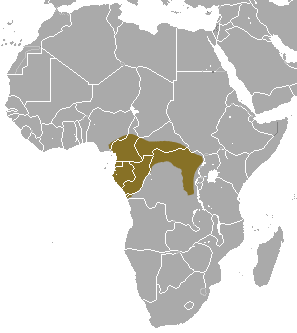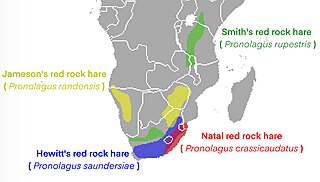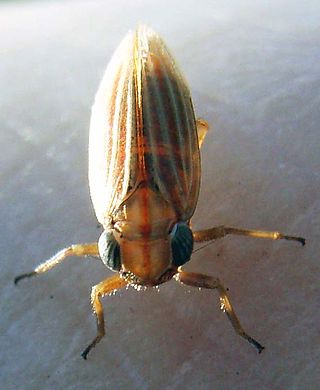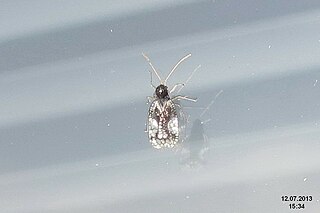
The Pterophoridae or plume moths are a family of Lepidoptera with unusually modified wings, giving them the shape of a narrow winged airplane. Though they belong to the Apoditrysia like the larger moths and the butterflies, unlike these they are tiny and were formerly included among the assemblage called "microlepidoptera".

Spermophilus is a genus of ground squirrels in the squirrel family. As traditionally defined the genus was very species-rich, ranging through Europe, Asia and North America, but this arrangement was found to be paraphyletic to the certainly distinct prairie dogs, marmots, and antelope squirrels. As a consequence, all the former Spermophilus species of North America have been moved to other genera, leaving the European and Asian species as true Spermophilus.

Drymarchon is a genus of large nonvenomous colubrid snakes, commonly known as indigo snakes or cribos, found in the Southeastern United States, Mexico, Central America, and South America.

The Polyporaceae are a family of poroid fungi belonging to the Basidiomycota. The flesh of their fruit bodies varies from soft to very tough. Most members of this family have their hymenium in vertical pores on the underside of the caps, but some of them have gills or gill-like structures. Many species are brackets, but others have a definite stipe – for example, Polyporus badius.

The black-footed mongoose is a mongoose species native to Central Africa, where it inhabits deep deciduous forests from eastern Nigeria to the southern Democratic Republic of the Congo. It has been listed as Least Concern on the IUCN Red List since 2008. It is omnivorous and feeds on ants, termites, Orthoptera, small rodents, frogs, lizards and fruits. It is mostly solitary and nocturnal.

Cretornis is a pterosaur genus from the late Cretaceous period of what is now the Jizera Formation in the Czech Republic, dating to about 92 million years ago. It only contains a single species, Cretornis hlavaci.

The red rock hares are the four species in the genus Pronolagus. They are African lagomorphs of the family Leporidae.

Cicadetta is a genus of generally small-bodied annual cicadas widespread across portions of the Palearctic, Indomalayan, and Afrotropical realms. In older scientific and taxonomic literature, this genus was popularly referred to as Melampsalta. These cicadas occur in a diverse spectrum of habitats, although most taxa are typically associated with weedy meadows and tallgrass prairie ecosystems. Several related species from North America were recently transferred to the genus Cicadettana.

Caliscelidae is a family of planthoppers, sap-sucking insects that belong to the order Hemiptera, suborder Auchenorrhyncha and superfamily Fulgoroidea. They are somewhat anomalous and have often been included within the family Issidae. Studies made in 2013 of the phylogeny of the Issidae and other groups using molecular techniques support the treatment of the group as a separate family. Sexual dimorphism can be marked. Some members of the family are called piglet bugs due to the shape of their snout. A particularly aberrant genus described in 2011 from India, Formiscurra, has males that resemble ants.

Propeamussium is a genus of saltwater clams, marine bivalve mollusks in the order Ostreoida.

Tibicen is a former genus name in the insect family Cicadidae that was originally published by P. A. Latreille in 1825 and formally made available in a translation by A. A. Berthold in 1827. The name was placed on the Official Index of Rejected and Invalid Generic Names in Zoology by the International Commission on Zoological Nomenclature in 2021. Certain European cicada species that were included by some authors in this genus at the time of its suppression are now listed under genus Lyristes Horváth, 1926. Other formerly-Tibicen species are placed in the tribe Cryptotympanini and include the genera Auritibicen Lee, 2015, Hadoa Moulds, 2015 Megatibicen Sanborn and Heath, 2016, and Neotibicen Hill and Moulds, 2015.

The genus Hadoa comprises large-bodied Cicadidae occurring in Western North America. Until recently, these species were in the genus Tibicen, which has now been redefined so as to include only a few European species, while most species from the Eastern and Central US are now placed in Neotibicen and Megatibicen.

Kalama is a genus of lace bugs in the family Tingidae. There are at least 30 described species in Kalama.

Dictyla is a genus of lace bugs in the family Tingidae. There are at least 80 described species in Dictyla.

Stephanitis is a genus of lace bugs in the family Tingidae. There are at least 90 described species in Stephanitis.

Derephysia is a genus of lace bugs in the family Tingidae. There are more than 20 described species in Derephysia.

Dictyonota is a genus of mostly European lace bugs in the family Tingidae. There are more than 60 described species in Dictyonota.
Cyvirus anguillidallo1, also known as Anguillid herpesvirus 1 (AngHV-1) is a species of virus in the genus Cyprinivirus, family Alloherpesviridae, and order Herpesvirales.

Acanthosoma is a genus of shield bugs in the family Acanthosomatidae, found in Europe, Asia, and Oceania. There are over 30 described species in the genus Acanthosoma.

Lyristes is a genus of cicadas from Europe and the Middle East. It was described by G. Horvath in 1926.


















